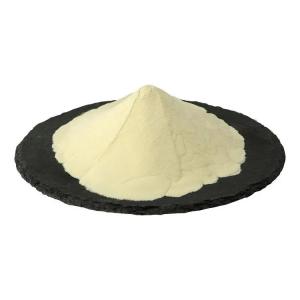The biological stimulating effects and mechanisms of phospholipids in agriculture
Time:2025-08-14Phospholipids exhibit various biostimulatory effects in agriculture, and their mechanisms of action mainly include the following aspects:
I. Promoting Plant Growth
Regulating Plant Hormone Synthesis: Phospholipids can activate the synthesis of endogenous hormones in crops, such as auxins and cytokinins. These hormones can promote root development, leaf growth, and photosynthesis, thereby stimulating crop growth. For example, experiments by Germany's KWS company showed that after applying water-soluble phospholipids in corn fields, the protein content of corn kernels increased by 8%.
Participating in Energy Metabolism and Cell Membrane Construction: Phospholipids contain phosphorus and can directly participate in plant energy metabolism, such as ATP synthesis, providing energy for plant growth. Meanwhile, they are important components of cell membranes, helping to maintain the structural and functional integrity of cell membranes, ensuring the normal physiological activities of cells, and thus promoting plant growth and development.
II. Improving Nutrient Absorption Efficiency
Enhancing Nutrient Penetration: Water-soluble phospholipids can adsorb on the surface of crop leaves or roots, reducing surface tension, enhancing the penetration efficiency of nutrients such as phosphorus and potassium in fertilizers, and reducing nutrient fixation and loss. In addition, they can act as "biological carriers" to wrap trace elements in their hydrophobic core and deliver them to plant cells in a targeted manner, improving the utilization rate of trace elements.
Optimizing Soil Structure: Phospholipid molecules can adsorb soil particles, promote the formation of aggregate structures, enhance the water and fertilizer retention capacity of the soil, and create a favorable soil environment for root growth, thereby facilitating plant nutrient absorption. For example, field experiments showed that phospholipids can increase soil water holding capacity by 10%-20%.
Activating Soil Microorganisms: Phospholipids can provide carbon sources for beneficial bacteria such as nitrogen-fixing bacteria and phosphate-solubilizing bacteria, stimulating their proliferation, and indirectly activating insoluble phosphorus in the soil, increasing the content of nutrients in the soil that can be absorbed and utilized by plants. For instance, after the application of phospholipids, the activity of phosphate-solubilizing bacteria can be increased by 2-3 times.
III. Enhancing Plant Stress Resistance
Stabilizing Cell Membrane Structure: Phospholipid molecules can stabilize the structure of plant cell membranes. Under adverse conditions such as drought, high temperature, and salinity, they reduce damage to crop cell membranes caused by stress, maintain normal cell functions, and thus enhance plant stress resistance.
Participating in Stress Signaling Transduction: Phospholipids can act as precursors of signaling molecules, activating stress-resistant pathways such as jasmonic acid in plants, and enhancing plant tolerance to adversities such as salinity and low temperature. For example, under drought conditions, they can form a protective film on leaves, reduce transpiration, and reduce crop yield loss by 15%-25%.
Scavenging Free Radicals: Some phospholipids have antioxidant effects. For example, ovo-phosphoprotein can scavenge free radicals in plants, reduce damage to plant cells caused by oxidative stress, enhance plant stress resistance, and improve crop resistance to biotic and abiotic stresses.
Promoting Wound Repair: Phospholipids participate in the process of cell membrane repair. When plants suffer mechanical damage or diseases, they can help reduce physiological disorders and promote the healing and recovery of plant wounds.


 CN
CN





